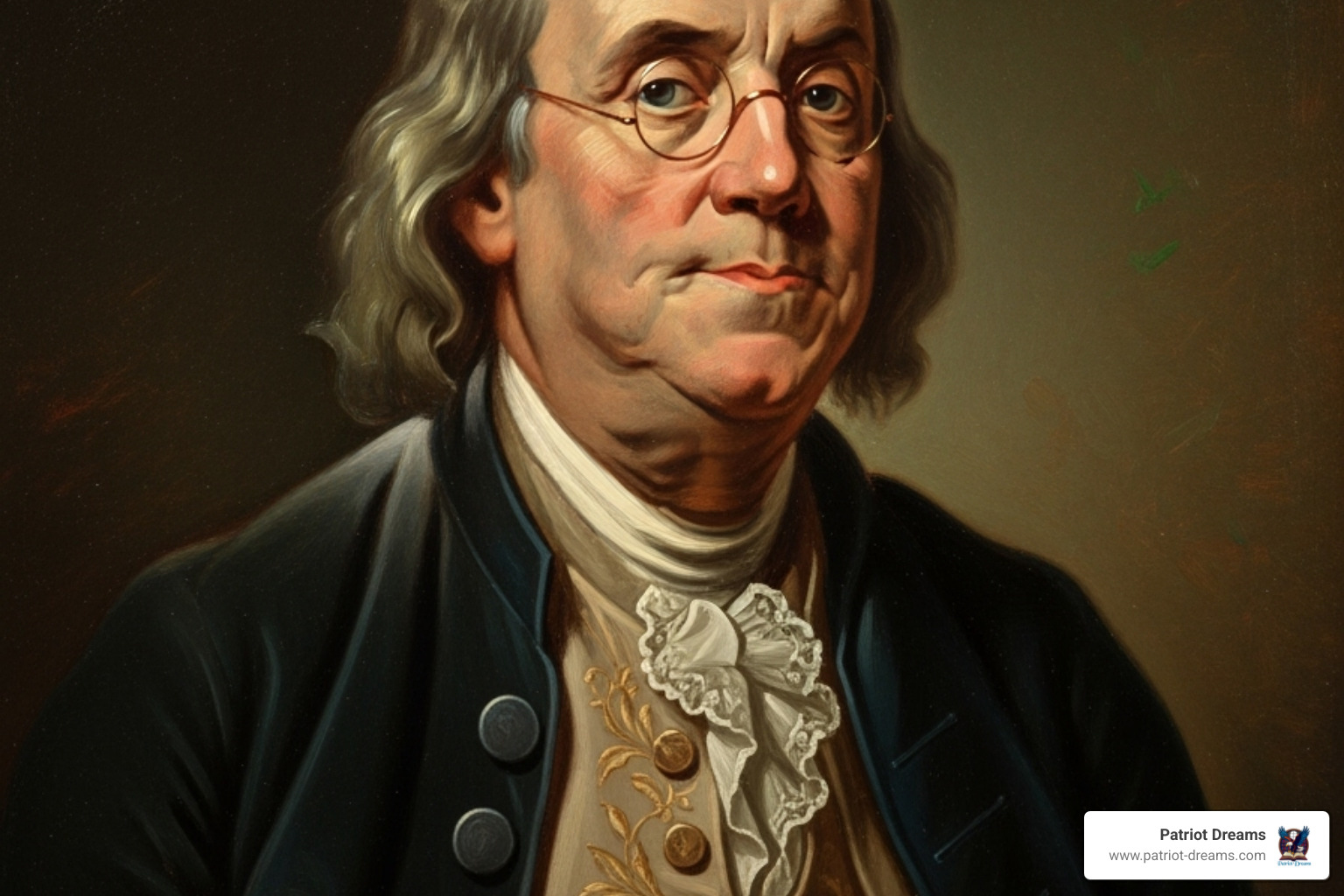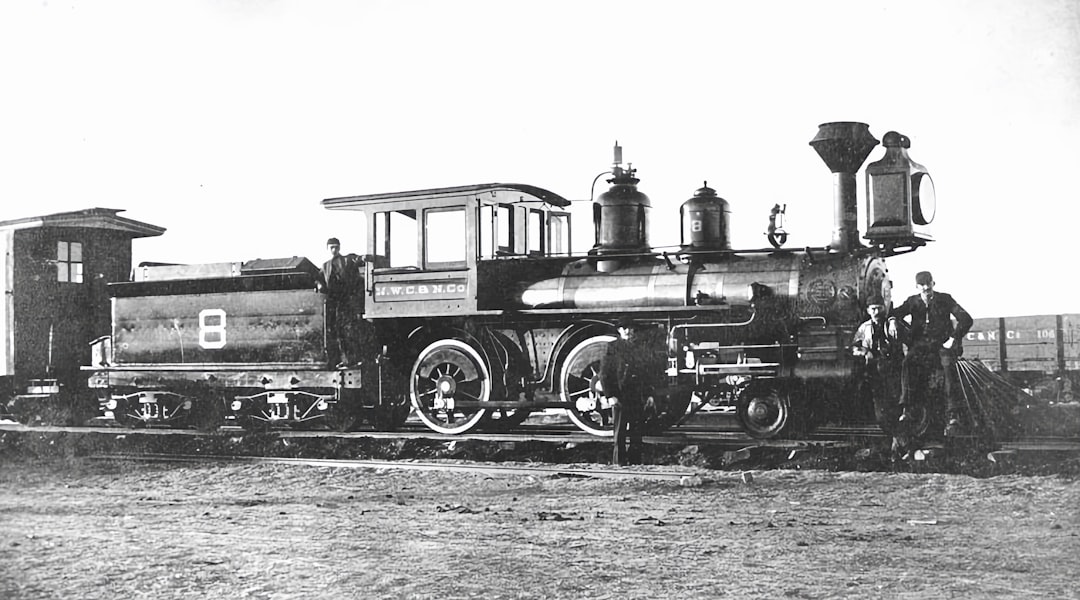The True Story of Sacagawea: Guide, Interpreter, and American Icon


Who Was the Real Sacagawea Behind the Legends
The True Story of Sacagawea: Guide, Interpreter, and American Icon reveals a complex young woman whose life was far more nuanced than the romanticized tales suggest. Born around 1788 to the Lemhi Shoshone tribe in present-day Idaho, Sacagawea became one of history's most celebrated yet misunderstood figures.
Key Facts About Sacagawea:
- Born: c. 1788 in Idaho to the Lemhi Shoshone tribe
- Captured: Age 12 by the Hidatsa tribe, taken to North Dakota
- Marriage: Age 13 to French-Canadian trader Toussaint Charbonneau
- Expedition Role: Interpreter and diplomatic symbol, not primarily a guide
- Death: Likely 1812 at Fort Manuel Lisa (though some oral histories suggest 1884)
- Legacy: Featured on U.S. dollar coin; more statues than any other American woman
The reality is that Sacagawea was a teenage mother who spoke multiple languages and served as a crucial interpreter during the Lewis and Clark Expedition. Her presence with her infant son Jean Baptiste signaled peaceful intentions to Native American tribes the Corps of Findy encountered.
While popular culture often portrays her leading explorers over mountains, historical records show her primary contribution was interpretation—translating between Shoshone, Hidatsa, French, and English in a complex chain of communication. She also demonstrated remarkable resourcefulness, once saving vital expedition supplies from a capsized boat.
Her story has been both celebrated and mythologized, used by movements from women's suffrage to westward expansion narratives. Yet the woman herself remains somewhat mysterious—no contemporary images exist, and even the spelling of her name is debated among historians and tribal communities.

From Shoshone Child to Expedition Member
Understanding Sacagawea begins with her childhood, long before she ever met Lewis and Clark. Her early experiences as a Shoshone girl, her traumatic capture, and her life among the Hidatsa people shaped the remarkable woman who would become essential to America's most famous expedition.
A Life Uprooted: Birth, Tribe, and Capture
Picture a young girl growing up along the pristine waters of Idaho's Salmon River around 1788. This was Sacagawea's world—a place where her people, the Lemhi Shoshone Tribe, had lived for generations. Her childhood was filled with the rhythms of traditional life: helping prepare the abundant salmon runs, learning to cure animal hides, and absorbing the wisdom of her elders.
But when Sacagawea was about 12 years old, her peaceful world shattered. In 1800, while her band was camped near present-day Three Forks, Montana, enemy warriors from the Hidatsa tribe attacked without warning. The raid was brutal and swift—many of her people were killed, and Sacagawea was among several young women captured and taken prisoner.
The journey from her homeland to the Hidatsa villages near what is now Bismarck, North Dakota, must have been terrifying for a young girl. She was hundreds of miles from everything familiar, forced to live among the very people who had destroyed her family's camp. Her childhood as a free Shoshone girl was over.
Marriage and Motherhood on the Frontier
Life in the Hidatsa village brought new hardships for teenage Sacagawea. Enter Toussaint Charbonneau, a French-Canadian fur trader who moved freely between Native communities and white settlements. How exactly Sacagawea became his wife isn't clear from historical records, but the stories aren't romantic. Some sources say Charbonneau won her in a gambling game. Others suggest he simply purchased her.
What we do know is that Sacagawea had little choice in the matter. She was roughly 13 years old when she became Charbonneau's wife—and she wasn't his only wife. He had also married another captured Shoshone woman.
For men like Charbonneau, marrying Native women wasn't just about companionship. These marriages gave them insider status with tribes, opening up trade opportunities and providing protection in dangerous territory. It was a practical arrangement that served his interests far more than hers.
By late 1804, Sacagawea was pregnant. On February 11, 1805, she gave birth to her son Jean Baptiste Charbonneau in the middle of a harsh North Dakota winter. The birth was difficult—Lewis wrote in his journal that her labor was "tedious and the pain violent." William Clark took a special liking to the baby, nicknaming him "Pomp" or "Pompy." From that point forward, Sacagawea would carry her infant son on her back in a traditional cradleboard wherever the journey took them.
Sacagawea's Recruitment
Meanwhile, Lewis and Clark had been wintering at the Mandan villages nearby, preparing for the next phase of their expedition west. They faced a serious problem: they needed interpreters who could help them communicate with the various tribes they'd encounter, especially the Shoshone people who lived in the mountains ahead.
The captains knew they'd need to trade for horses to cross the Rocky Mountains, and the Shoshone were famous for their horse herds. This is where Charbonneau became valuable—he could speak French and Hidatsa, and his wife Sacagawea could speak Shoshone. They hired Charbonneau as an interpreter, and Sacagawea came as part of the package deal.
On April 7, 1805, just two months after giving birth, Sacagawea joined the Corps of Findy as they resumed their westward journey. She was the youngest member and the only woman in the group of roughly 30 people. No one could have predicted then just how crucial she would become to the expedition's success.
What started as a practical arrangement—hiring her husband for his language skills—would evolve into something far more significant. Sacagawea's knowledge, quick thinking, and diplomatic presence would prove invaluable in ways the captains never imagined when they set out from the Mandan villages that spring morning.
The Indispensable Woman: Sacagawea's Role in the Expedition
Sacagawea's contributions went far beyond simple translation. Her presence, knowledge, and bravery were critical to the expedition's survival and success. While some historians have downplayed her role, the journals of Lewis and Clark themselves tell a different story—one of a woman whose skills proved essential at every turn.
More Than a Guide: Interpreter and Naturalist
Sacagawea's primary role as an interpreter cannot be overstated. The expedition faced a massive language barrier when trying to communicate with various Native American tribes. Without her, many crucial negotiations would have been impossible.
She made communication possible through what became known as a language chain. Picture this: Sacagawea would translate from Shoshone to Hidatsa for her husband Charbonneau, who would then translate Hidatsa to French for Private François Labiche, who would finally translate French to English for Lewis and Clark. It sounds complicated—and it was—but this chain became their lifeline for understanding and negotiations.
But her value extended far beyond words. Sacagawea possessed an intimate knowledge of the land that repeatedly saved the expedition from hunger and hardship. She was skilled at foraging for edible plants, supplementing their dwindling food supplies with roots, berries, and other nutritious finds that kept the men fed and healthy.
Her knowledge of geography proved equally valuable. As they approached her Shoshone homeland, she recognized landmarks and could predict the terrain ahead. She even corrected Clark's maps at times, showing a practical understanding of the landscape that formal education couldn't provide. The expedition journals repeatedly note her resourcefulness in ways both big and small.
A Symbol of Peace and a Voice of Reason
Sacagawea's presence with her infant son Jean Baptiste served as a powerful token of peace. As William Clark wisely observed, "the Wife of Shabono [Charbonneau]…reconciles all the Indians, as to our friendly intentions. A woman with a party of men is a token of peace."
This non-threatening presence was crucial for the expedition's survival. When Native American tribes saw a woman with a baby among the explorers, they immediately understood this wasn't a war party. Her presence dispelled fear and opened doors to friendly interactions that might otherwise have been impossible.
Her bravery and quick thinking were put to the ultimate test during the famous capsized boat incident in May 1805. While canoeing down a tributary of the Missouri River, their boat overturned in the rushing waters. Essential papers, books, instruments, medicines, and provisions spilled into the roaring current.
While others panicked, Sacagawea remained remarkably calm. With quick thinking, she managed to gather many of these vital items from the water, saving journals and supplies that would have been lost forever. This act of heroism was so significant that Lewis and Clark named the Sacagawea River in her honor. Clark's journal entry praised her value to the expedition in glowing terms.
A Fateful Reunion and Diplomatic Triumph
Perhaps Sacagawea's most dramatic contribution came when the expedition desperately needed horses to cross the formidable Rocky Mountains. Their best hope lay with the Shoshone—her birth tribe. It was a moment filled with uncertainty and high stakes.

On August 17, 1805, while seeking the Shoshone near Lemhi Pass in modern-day Idaho, something extraordinary happened. As Sacagawea began interpreting during horse negotiations, she suddenly recognized the group's leader. It was her brother, Chief Cameahwait.
The reunion with her brother was deeply emotional. Clark's journals describe the touching scene: "The meeting of those people was really affecting, particularly between Sah-cah-gar-we-ah and her sister." This wasn't just a personal moment—it was a diplomatic triumph that changed everything.
Her ability to connect the expedition with her long-lost family provided an incredible advantage. The Shoshone, convinced of the expedition's peaceful intentions through Sacagawea's presence and her emotional moment with their chief, agreed to help. This successful negotiation provided the much-needed horses and guides, playing a critical diplomatic role in securing passage through treacherous territory.
Without this reunion, the Corps of Findy might never have made it to the Pacific Ocean.
The True Story of Sacagawea: Guide, Interpreter, and American Icon
Sacagawea's story is one of profound resilience, intelligence, and courage. Navigating a world of cultural collision, she emerged as a pivotal figure in one of America's greatest explorations. While historical records are limited and often biased, her legacy as a guide, interpreter, and icon endures, reminding us of the complex and often untold stories that shape our nation's history. The historical record of Sacagawea is filled with debate and interpretation, from the spelling of her name to the date of her death, all of which contribute to her legendary status.
What's in a Name? The Sacagawea, Sakakawea, and Sacajawea Debate
One of the most persistent debates surrounding Sacagawea is the spelling and pronunciation of her name. We often encounter "Sacagawea," "Sakakawea," and "Sacajawea," each with its own origins and proponents.
| Spelling | Proposed Meaning | Origin | Affiliation / Usage |
|---|---|---|---|
| Sacagawea | "Bird Woman" | Hidatsa | Most widely used, adopted by U.S. government, preferred by NPS |
| Sakakawea | "Bird Woman" | Hidatsa | Official spelling in North Dakota, used by Three Affiliated Tribes |
| Sacajawea | "Boat Launcher" | Shoshone | Favored by some Lemhi Shoshone, popularized by Eva Emery Dye's novel The Conquest (1902) |
The spelling "Sacagawea" is generally accepted in academic circles and by the U.S. government, derived from the Hidatsa words Sacaga (bird) and wea (woman). However, many Shoshone people prefer "Sacajawea," arguing it derives from their language, meaning "boat launcher" or "boat puller," referring to her skill with boats. The Hidatsa spelling "Sakakawea" is also widely used, particularly in North Dakota, where she spent significant time. The pronunciation also varies, with "Sa-ka-ga-WE-a," "Sa-ka-ja-WE-a," and "Sa-KAH-ka-we-a" being common. This linguistic debate highlights the challenges and limitations in reconstructing her life story due to historical documentation, which was primarily recorded by non-Native speakers.
Life After Lewis and Clark: A Tale of Two Endings
What happened to Sacagawea after the expedition remains one of the most debated aspects of her life. When the Corps of Findy returned eastward in August 1806, Sacagawea, Charbonneau, and Jean Baptiste ended their journey with the Corps at the Mandan and Hidatsa villages.
William Clark, who had grown fond of Jean Baptiste, offered to oversee his education. In 1811, Sacagawea and Charbonneau took Clark up on his offer to oversee their son’s education in St. Louis, after Clark was appointed the superintendent of Indian Affairs. While in St. Louis, the couple worked for the Missouri Fur Company. It's believed that Sacagawea gave birth to a girl named Lisette in 1812.
The prevailing historical record, supported by a journal entry from John Luttig, a clerk at Fort Manuel Lisa, indicates Sacagawea died on December 20, 1812, from a "putrid fever" (likely typhus), at the age of approximately 25 years. William Clark himself noted "Sacagawea Dead" in his expense records from 1825-1826. This account suggests a short life after the expedition.
However, a compelling oral history from the Shoshone people tells a different story. According to this tradition, Sacagawea did not die in 1812 but instead left Charbonneau, returned to her people, and lived a long life, possibly until 1884, passing away at the age of 95 on the Wind River Reservation in Wyoming. This alternative narrative gained prominence in the early 20th century, notably championed by Dr. Grace Raymond Hebard, who conducted extensive research and interviewed elders. The debate over her death date and location significantly impacts her legacy and how she is remembered, highlighting the challenges and limitations in reconstructing her life story due to historical documentation versus oral traditions. Who is buried in Sacagawea's grave remains a topic of fascinating historical inquiry.
Sacagawea's Rise to American Icon
Despite the ambiguities in her historical record, Sacagawea has undeniably risen to the status of an American icon. Her story captured the imagination of the American public, particularly during the early 20th century.
One of the most significant moments in her memorialization came through the women's suffrage movement. Activists, seeking powerful female figures to inspire their cause, adopted Sacagawea as a symbol of women's worth and independence. They highlighted her strength, her contributions to the expedition, and particularly the anecdote where she was allowed to vote on where the Corps would build its winter quarters at the Pacific coast. While her suggestion was not ultimately followed, the act of a woman casting a vote among men resonated deeply with suffragists. This connection helped solidify her place in American history, changing her into a symbol for broader cultural recognition.
Today, Sacagawea is honored in numerous ways. She is featured on the Sacagawea Golden Dollar coin, first issued in 2000, with her face peering over her shoulder as her baby is nestled safely against her back. It's a powerful image of motherhood and resilience. There are also more statues of Sacagawea in the United States than of any other American woman, commemorating her across various states. From the National Statuary Hall in Washington D.C. to numerous parks and historical sites, her image serves as a reminder of her enduring legacy as a guide, interpreter, and American icon. Our audio narratives on Patriot Dreams strive to bring these powerful figures to life, allowing us to connect with the past in a deeply personal way.
Frequently Asked Questions about Sacagawea
People are endlessly curious about Sacagawea, and honestly, who can blame them? Her story is filled with incredible moments that seem almost too remarkable to be true. Let's tackle some of the most common questions we hear about this fascinating woman.
What was Sacagawea's most important contribution to the Lewis and Clark expedition?
This is a great question that gets to the heart of The True Story of Sacagawea: Guide, Interpreter, and American Icon. While many people picture her pointing the way over mountain passes, her real superpower was communication.
Her most critical contribution was serving as an interpreter during that emotional reunion with her brother, Chief Cameahwait. This moment changed everything for the expedition. Without her ability to translate and the instant trust her family connection created, Lewis and Clark would never have gotten the horses they desperately needed to cross the Rocky Mountains.
But there's another equally important role she played. Her presence as a woman carrying a baby was like carrying a giant peace flag. As William Clark himself noted, Native tribes immediately knew the Corps wasn't a war party when they saw her. War parties don't bring nursing mothers along for the ride.
These two contributions—her linguistic skills and her symbolic presence—literally made the difference between success and failure for the entire expedition.
Did Sacagawea get paid for her work on the expedition?
Here's where the story gets frustrating. Sacagawea herself received absolutely nothing for her invaluable work. Not a penny. Not an acre of land. Nothing.
Her husband Toussaint Charbonneau, on the other hand, was paid $500.33 and given 320 acres of land for their combined services. Think about that for a moment—he got paid for work that she largely performed.
William Clark clearly felt bad about this injustice. He later wrote in a letter that Sacagawea deserved "a greater reward for her attention and services... than we had in our power to give her." Even Clark recognized how unfair the situation was.
This payment disparity reflects the harsh realities of being a Native American woman in the early 1800s. Despite her crucial contributions, she had no legal standing to receive compensation directly.
Why are there different spellings and meanings for her name?
The name debate is one of those historical puzzles that shows how complicated it can be to piece together someone's life story from limited records. We see three main spellings, each with passionate defenders.
"Sacagawea" and "Sakakawea" both come from the Hidatsa language, meaning "Bird Woman." This makes sense since she lived with the Hidatsa tribe for several years after her capture. The expedition's official records generally use variations of these spellings.
"Sacajawea" tells a different story. Some Shoshone people prefer this version, arguing it comes from their language and means "Boat Launcher" or "Boat Puller." This would refer to her skill with watercraft, which certainly fits with her quick thinking during that famous boat rescue.
The confusion stems from the fact that Lewis and Clark themselves were inconsistent in their journals. They spelled her name different ways at different times, and they were trying to write down sounds from languages they didn't really understand.
Today, you'll see all three spellings used in different places. The U.S. government officially uses "Sacagawea," North Dakota prefers "Sakakawea," and many Shoshone communities favor "Sacajawea." Each spelling represents a different piece of her complex identity—the Hidatsa woman she became and the Shoshone woman she was born to be.
The Enduring Legacy of a Trailblazer
Sacagawea was a remarkable woman whose impact extends far beyond the pages of history books. Her story is one of profound resilience, intelligence, and courage—qualities that enabled her to steer a world of cultural collision and emerge as a pivotal figure in one of America's greatest explorations.
Sacagawea's ability to bridge cultural divides was perhaps her greatest gift. She didn't just translate languages; she translated entire worldviews, helping two vastly different cultures understand each other. Her skill in interpreting complex negotiations and contributing vital knowledge of the land proved indispensable to the Lewis and Clark Expedition. She was far more than a simple guide—she was a diplomatic asset, a resourceful survivor, and a symbol of peace that opened doors the Corps of Findy couldn't have opened alone.
What makes her story even more compelling is how she accomplished all this while carrying her infant son on her back. At barely twenty years old, she demonstrated wisdom beyond her years and courage that would be remarkable in anyone, let alone someone who had already endured capture, forced relocation, and an arranged marriage.
The limited and often biased historical records we have only scratch the surface of who she really was. Yet her legacy as a guide, interpreter, and icon endures, reminding us of the complex and often untold stories that shape our nation's history. The ongoing debates surrounding her name and the circumstances of her death don't diminish her importance—they actually add to her mystique, inviting us to dig deeper into the nuances of the past.
At Patriot Dreams, we believe that understanding figures like Sacagawea allows us to appreciate the rich mix of American history and the diverse individuals who wove it together. Her story shows us that history isn't just about famous men making grand gestures—it's also about young mothers making split-second decisions that save expeditions, about interpreters whose words prevent conflicts, and about women whose very presence changes the course of events.
The audio narratives on Patriot Dreams bring these powerful personal journeys to life, allowing us to connect with the past in a deeply personal way. When you hear Sacagawea's story told with the nuance it deserves, you begin to understand not just what happened, but what it felt like to live through these extraordinary moments. Learn about how Patriot Dreams brings history to life.
Join the Patriot Dreams Community
Download the app today and start your journey through American history and personal legacy.

Explore Our Latest Insights
Dive into stories that shape our American legacy.





